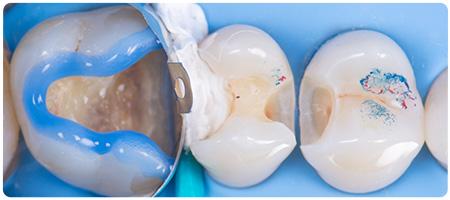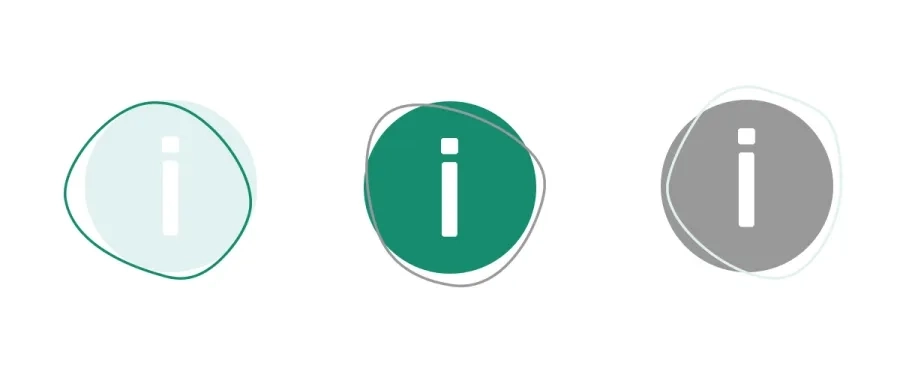In modern restorative dentistry, achieving a strong, durable bond between restorative materials and tooth structure is essential for long-term clinical success. The two primary substrates involved in adhesive dentistry are enamel and dentine, each with distinct structural and chemical properties that influence bonding strategies. Among the various techniques available, selective etching has emerged as the preferred approach.
Enamel and dentine: two fundamentally different substrates to bond to
Enamel is the highly mineralized, outermost layer of the tooth. Composed of approximately 96% hydroxyapatite, it is dense, dry, and relatively easy to bond to when properly etched.
Dentine, on the other hand, is a more organic, hydrated tissue with a complex tubular structure. It contains a higher proportion of collagen and water, making it more sensitive to over-etching and prone to post-operative sensitivity if mishandled.
Etch-and-rinse, self-etch and selective etching strategies
Historically, the total-etch (or etch-and-rinse) technique was widely used, involving phosphoric acid application to both enamel and dentine. While this method provides excellent enamel bonding, it can lead to over-demineralization of dentine, compromising bond strength and increasing the risk of sensitivity.
To address these concerns, self-etch adhesives were developed, which eliminate the rinsing step and are gentler on dentine. However, they often underperform on enamel due to insufficient etching. Self-etching strategies tend to induce more marginal discolouration.

This led to the rise of selective etching—a hybrid technique that combines the best of both worlds. Selective etching involves applying phosphoric acid only to the enamel margins for about 15 seconds, followed by rinsing and drying. The dentine is left untouched or treated with a self-etch or with a universal adhesive.

With a universal adhesive such as G-Premio BOND from GC, all etching modes can be used. This is in contrast with previous self-etching adhesives, such as AdheSE* and Clearfil SE Bond*. For these adhesives, etching dentine prior to their use is a hazard for long-term bonding performance to dentine.1 Hence, to be on the safe side, a universal adhesive is the best option, even when selective enamel etching is applied, since the demarcation between the two substrates cannot always strictly be followed.
A recent meta-analysis evaluating etching strategies with universal adhesives found that prior phosphoric acid etching significantly reduced marginal discolouration, whereas the self-etch approach was associated with the lowest incidence of post-operative sensitivity.2 Hence, this indicates that selectively etching enamel provides the best of both worlds.
The Importance of Enamel Preservation
Whenever possible, preserving enamel during cavity preparation or restorative procedures is of paramount importance.3 This approach aligns with the principles of minimally invasive dentistry and offers several clinical advantages.
First, enamel provides superior bond strength.4 Adhesive systems consistently demonstrate higher and more reliable bond strengths to enamel compared to dentine, contributing to the durability of the restoration.
Second, restorations with enamel margins exhibit greater longevity.5 Enamel is more resistant to degradation and marginal leakage over time, which helps maintain the integrity of the restoration and reduces the likelihood of secondary caries.
Third, enamel supports aesthetic stability.6 Margins in etched enamel are less prone to discolouration, which enhances the long-term aesthetic appeal.
Fourth, preserving enamel helps minimize post-operative sensitivity. As a natural barrier, enamel protects the underlying dentine and pulp from thermal and chemical stimuli, enhancing patient comfort.
Most importantly, enamel preservation reinforces a core principle of conservative dentistry: to retain as much healthy tooth structure as possible. This not only supports the biological integrity of the tooth but also improves the prognosis of restorative treatments.
*Not trademarks of GC
- Frankenberger R, Lohbauer U, Roggendorf MJ, Naumann M, Taschner M. Selective enamel etching reconsidered: better than etch-and-rinse and self-etch? J Adhes Dent. 2008 Oct;10(5):339-44.
- Assis P, Silva C, Nascimento A, Anníbal H, Júnior S, Soares N, Junior R, Braz R. Does Acid Etching Influence the Adhesion of Universal Adhesive Systems in Noncarious Cervical Lesions? A Systematic Review and Meta-analysis. Oper Dent. 2023 Jul 1;48(4):373-390. doi: 10.2341/22-067-LIT.
- Laegreid T, Gjerdet NR, Vult von Steyern P, Johansson AK. Class II composite restorations: importance of cervical enamel in vitro. Oper Dent. 2011 Mar-Apr;36(2):187-95. doi: 10.2341/10-126-L.
- Breschi L, Maravic T, Mazzitelli C, Josic U, Mancuso E, Cadenaro M, Pfeifer CS, Mazzoni A. The evolution of adhesive dentistry: From etch-and-rinse to universal bonding systems. Dent Mater. 2025 Feb;41(2):141-158. doi: 10.1016/j.dental.2024.11.011.
- Bagheri M, Ghavamnasiri M. Effect of cavosurface margin configuration of Class V cavity preparations on microleakage of composite resin restorations. J Contemp Dent Pract. 2008 Feb 1;9(2):122-9.
- Hong X, Huang Z, Tong Z, Jiang H, Su M. Clinical effects of different etching modes for universal adhesives: a systematic review and meta-analysis. Ann Palliat Med. 2021 May;10(5):5462-5473. doi: 10.21037/apm-21-890.

